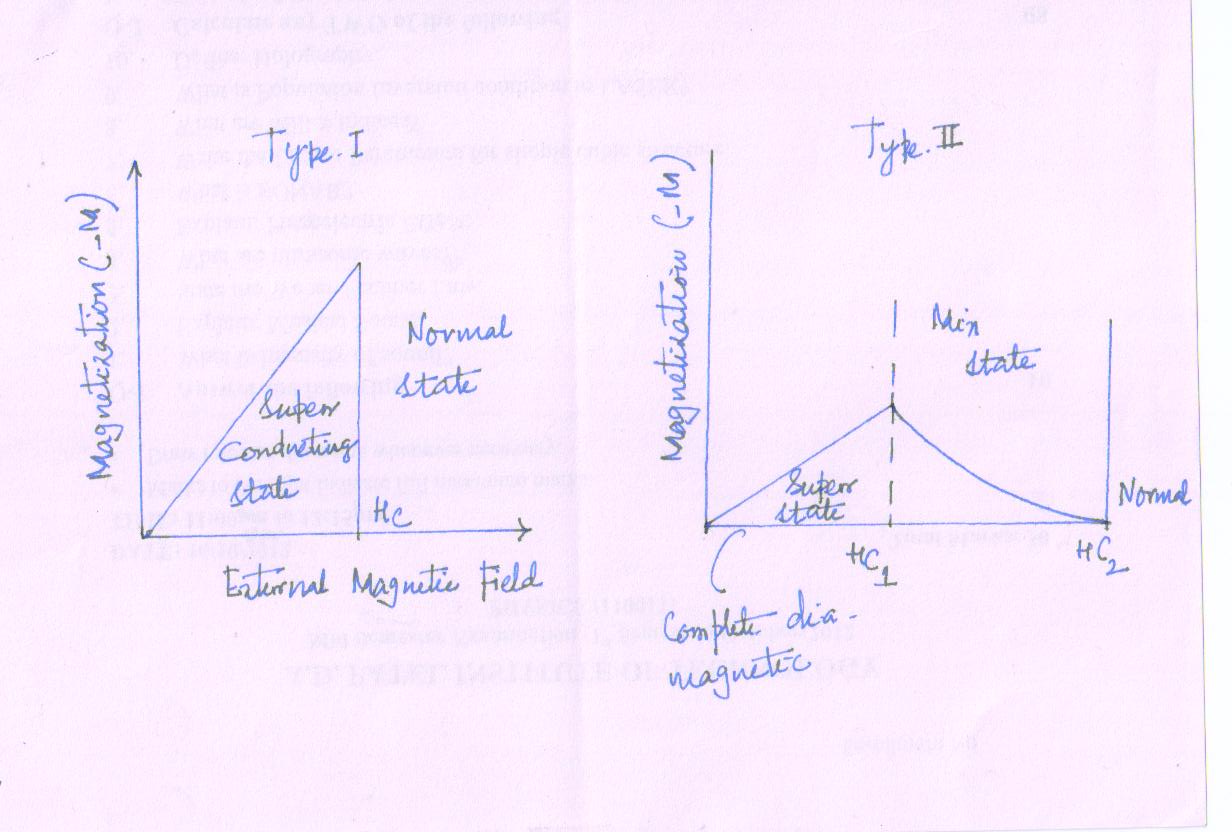Site pages
Current course
Participants
General
MODULE 1. Magnetism
MODULE 2. Particle Physics
MODULE 3. Modern Physics
MODULE 4. Semicoductor Physics
MODULE 5. Superconductivty
MODULE 6. Optics
LESSON 22. Isotop Effect & Type of superconductor
Isotope Effect
In 1950, C A Reynolds and E M Maxwell found that the critical temperature decreases with increasing isotopic mass M
The variation is given by
Tc \[\propto\] \[{M^{ - \alpha }}\]
\[\alpha\] is constant and is approximately 0.5.
The phenomenon of decrease of critical temperature with increasing atomic mass is called isotope effect.
Since the mean square of amplitude of atomic vibrations is proportional to \[\sqrt M\] at low temperature.
The value of \[\alpha\] can be expressed as
\[\alpha\] = \[{{\partial \left( {ln{T_c}} \right)} \over {\partial \left( {lnM} \right)}}\]
A change in the isotopic mass does not change the electronic structure.
Dependence of transition temperature on the isotopic mass suggests involvement of electron-lattice interaction.
Type I and II superconductor
Superconductors are divided into two types depending on the way of transition from superconducting to normal state proceed when the externally applied magnetic field exceeds.
Type-I
-
The transition from superconducting state to normal state is the presence of magnetic field occurs sharply at the critical value of Hc. Fig.13(1)

-
It is perfectly diamagnetic below Hc and completely expels the magnetic field from the interior of the superconducting phase.
-
Up to the critical field strength, the magnetization of the material grows in proportion to the external field and then suddenly drops to zero at the transition to the normal state.
-
It has only one critical field
- The magnetic field can penetrate only the surface layer and current can flow only in this layer.
-
It is poor carriers of electric current.
-
The critical field Hc is relatively low; it would be generate magnetic fields about 100 to 2000Gauss.
-
It is not much used in production of high magnetic field.
-
It has low critical field.
-
It shows complete Meissner effect. Aluminum, Lead, Indium and Tin
Type – II
-
It is discovered by Schubnikov in 1930.
-
It is characterized by two critical fields Hc1 and Hc2. Fig.13(2)
-
It is hard superconductor.
-
The transition from superconducting state to normal state occurs gradually as the magnetic field is increased from Hc1 to Hc2 .
-
The magnetization of material grows in proportion to the external magnetic field up to the lower critical value Hc1.
-
The external magnetic flux is expelled from the interior of the material till then.
-
At Hc1 the magnetic field lines begin penetrating the material.
-
As a magnetic field increases, the magnetic flux through the material increases.
-
At upper critical Hc2, the magnetization vanishes completely and the external field has completely penetrate and destroyed the superconductivity.
-
Between Hc1 and Hc2, the material is in a magnetically mixed state but electrically it is a superconductor.
- Hc2 can be as high as 20-50 \[{{Wb} \over {{m^2}}}\] and the retention of superconductivity in such high magnetic fields make type II materials very useful in application of creating very high magnetic fields.
- Transition metals and alloys Niobeum, Silicon, Venedium